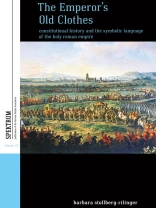For many years, scholars struggled to write the history of the constitution and political structure of the Holy Roman Empire. This book argues that this was because the political and social order could not be understood without considering the rituals and symbols that held the Empire together. What determined the rules (and whether they were followed) depended on complex symbolic-ritual actions. By examining key moments in the political history of the Empire, the author shows that it was a vocabulary of symbols, not the actual written laws, that formed a political language indispensable in maintaining the common order.
สารบัญ
List of Illustrations
Acknowledgements
Abbreviations
Introduction
Chapter 1. Creation and Depiction of the Empire: Worms, 1495
Chapter 2. Cleavage of the Sacral Community: Augsburg, 1530
Chapter 3. More Strife than Ever Before: Regensburg, 1653/54
Chapter 4. Parallel Worlds: Frankfurt-Regensburg-Vienna, 1764/65
Conclusion: The Symbolic Logic of the Empire
Bibliography
Index
เกี่ยวกับผู้แต่ง
Barbara Stollberg-Rilinger is rector of the Wissenschaftskolleg zu Berlin/Institute for Advanced Study and Professor of Early Modern History at the University of Münster. She is the author of Das Heilige Römische Reich Deutscher Nation: Vom Ende des Mittelalters bis 1806 (2009), Europa im Jahrhundert der Aufklärung (2000), and Rituale (2013). Her most recent book is Maria Theresia: Die Kaiserin in ihrer Zeit. Eine Biographie (C.H. Beck, Munich 2017); forthcoming English translation: Maria Theresa: The Empress in Her Time. A Biography (Princeton University Press, 2020). In 2005 she received the prestigious Leibniz Prize of the German Science Foundation, in 2003 the Prize of the Historical Collegium of the Bavarian Academy of Science.












